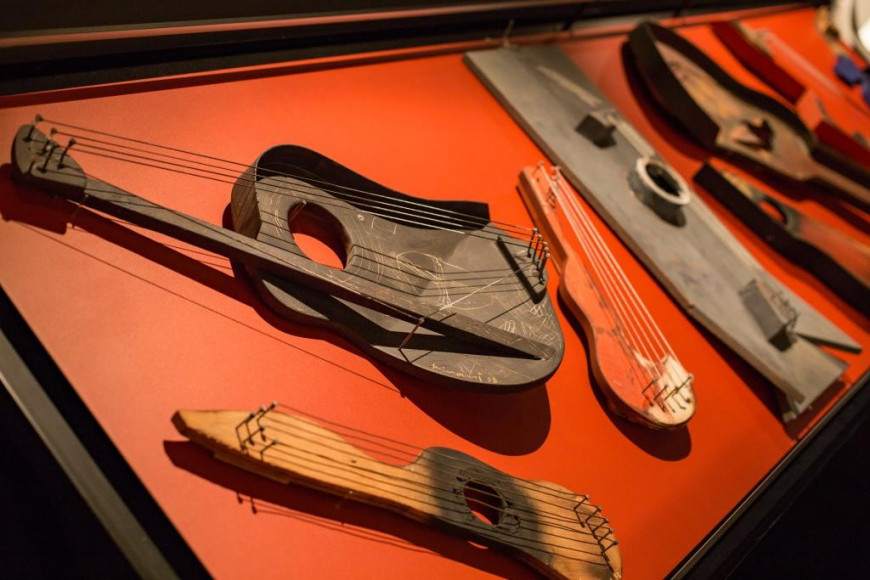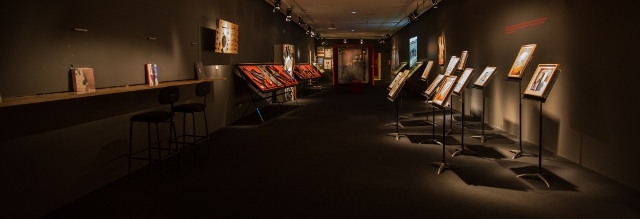
News
The musical poetry of Josep Guinovart
There are artists with a clear omni-comprehensive vocation. Their endeavour consists in offering answers to many of the questions raised in the context in which they live, think and create, thus becoming representatives of an era. Often there is the case where they may also have a firm social commitment and empathise, above all, with the most marginalised groups in society. In this way, they themselves must act on the sidelines, and this is a place not free of its perils.
We are not talking about the pretentious Wagnerian idea of the total work of art, nor the more than familiar multidisciplinary notion pervading the context of contemporary art, but rather the "Nietzschean" approach that, from an artistic perspective of the world, creates values and enables each gesture of our life to become a potential artistic creation. This act of creating values is possible, of course, from a solid ground and from carefully conceived conceptions of the world and society. In many cases, this same attitude yearns to understand and express the feelings that arise from other artistic expressions, whilst with them there is a direct connection that strikes a major chord.
That is why the works of such an artist become polyhedral, transcending the discipline itself, where when we see a painting, we can also read a poem or listen to a piece of music.
One of the main artistic interests of Guinovart was music, which explains that, beyond being a music lover, he also knew how to integrate it so well in many of his works. Therefore, while we sometimes find ourselves listening to authentic musical pieces, others we seem able to perceive through a tangible body, that is neither a musical instrument, nor an audio playback device. This is the force of "Guinovartian" abstraction, with its own peculiarities, with its unique and unmistakable character.
Few like him have been able to approach jazz from a work of art. In John Coltrane (1980) appears to want to communicate the feelings that arise by listening to, for example, Giant Steps: a fragile figure made of iron tubes, surging up to the sky and being released from the confines of the body. The tune gives us goose bumps, the saxophone solo makes us light as angels and helps us escape from the physical sphere. However, he also wants to introduce us to the most spiritual and ethereal musician, which was Coltrane.
As a lover of jazz, particularly of the trumpet, this collection of works dedicated to this style could not fail to make a unique tribute to one of the great pioneers of bebop: Dizzy Gillespie (1986), where he appears, of course, holding the instrument in his hands with the bell facing up.
In Tribute to Alberta Hunter (1987), there is a clarinet from where the sound that takes us to the light of the stage emanates, where there is the presence of the singer who fills the scenic space with ironic lyrics pronouncing hard-hitting truths. It is like an ascent towards wisdom.
The tragedy of blues singer Bessie Smith, who after being acclaimed on stage fell into oblivion and bled to death in a car accident, is reflected in the tribute (1986). At a height, a white angel seems to rest, in stark contrast to the Blues Empress who, because she was black, a hospital refused to attend.
Guinovart was also passionate about cante jondo, a unique Flamenco vocal style. Everything that evokes this way of singing was exposed in his work Jondo (undated). In the artist, we discover the search for very deep roots through the songs of a particular land that emanate from the depths of the soul as if they were prayers, because he was endowed with the gift of the local land, acquired from early childhood in the stubble landscape of Agramunt.
Thanks to the close bond he maintained with poetry, he also gave testimony to his passion for Lorca through a direct relationship with music. The Lorquian Guitars (1988) are poetic objects that, all of a sudden, present us to the imagination of the Andalusian poet and his connection with flamenco, as well as all kinds of references to cante jondo and, ultimately, to the constellation of feelings that arise from all this.
Everything that the human voice could express was of interest to Guinovart. That is why he also brought us closer to the opera and the mythologies and themes we find in works such as Wagner´s Tannhäuser. The painting with this same title (2007) presents the face of the German medieval poet on fragments of musical scores. In Luisa Miller 4 (2007) he offers a glimpse of the difficult love relationship between Rodolfo and Luisa, forbidden by the suitor’s father and that Verdi captured beautifully in this opera.
Overall, music as an abstract art evokes ideas that, to make them present in tangible pieces must be carefully reduced to specific symbols that will make up an abstract work. But also, if need be, there is the recourse of embodying a poem in a painting: letters converted into drawings, words that are transformed into colours. We can say, therefore, that Guino's empathy towards poetry and music made him a poet and musician.


